CSS Virginia vs USS Monitor At dawn on 9 March 1862, CSS Virginiaprepared |
Today, March 9, she expected to inflict a similar fate on the grounded steam frigate Minnesota and other enemy ships, probably freeing the lower Chesapeake Bay region of Union seapower and the land forces it supported. Virginia would thus contribute importantly to the Confederacy's military, and perhaps diplomatic, fortunes. However, as they surveyed the opposite side of Hampton Roads, where the Minnesota and other potential victims awaited their fate, the Confederates realized that things were not going to be so simple. There, looking small and low near the lofty frigate, was a vessel that could only be USS Monitor, the Union Navy's own ironclad, which had arrived the previous evening after a perilous voyage from New York. Though her crew was exhausted and their ship untested, the Monitor was also preparing for action. Undeterred, Virginia steamed out into Hampton Roads. Monitor positioned herself to protect the immobile Minnesota, and a general battle began. Both ships hammered away at each other with heavy cannon, and tried to run down and hopefully disable the other, but their iron-armored sides prevented vital damage. Virginia's smokestack was shot away, further reducing her already modest mobility, and Monitor's technological teething troubles hindered the effectiveness of her two eleven-inch guns, the Navy's most powerful weapons. Ammunition supply problems required her to temporarily pullaway into shallower water, where the deep-drafted Virginia could not follow, but she always covered the Minnesota. Soon after noon, CSS Virginia gunners concentrated their fire on USS Monitor's pilothouse, a small iron blockhouse near her bow. A shell hit there blinded Lieutenant John L. Worden, the Union ship’s Commanding Officer, forcing another withdrawal until he could be relieved at the conn. By the time she was ready to return to the fight, Virginia turned away toward Norfolk. |
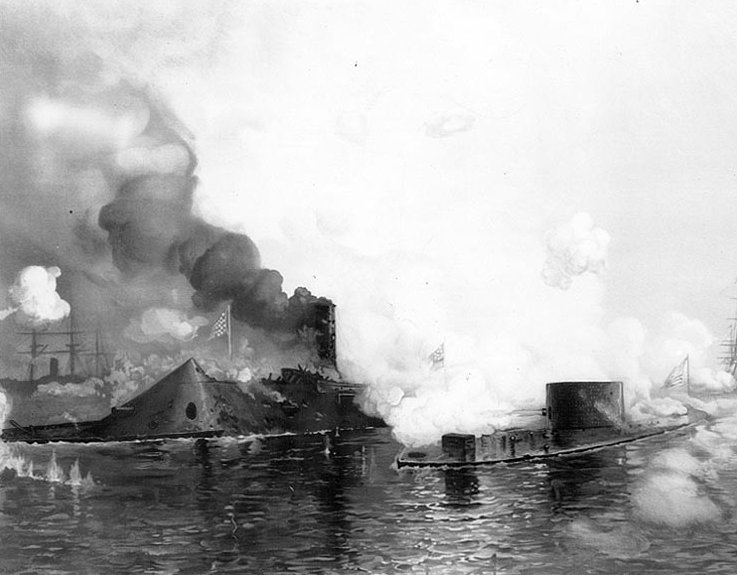 |
The first battle between ironclad warships had ended in stalemate, a situation that lasted until Virginia 's self-destruction Lithograph by Closson Blake, after a painting by W.F. Halsall, depicting the two ironclads engaging at close range. |
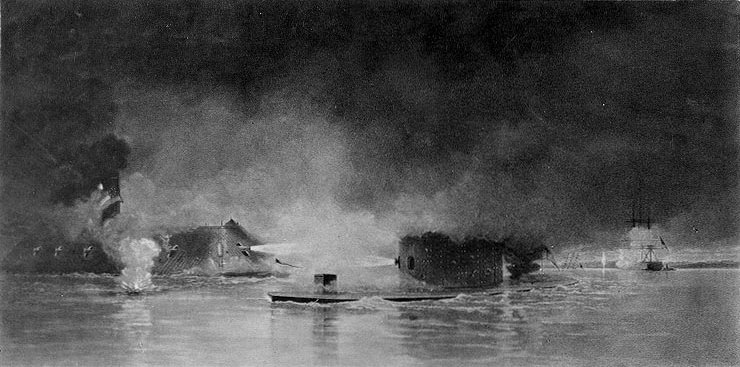 |
| Contemporary print by C. Parsons, New York, after a drawing by J. Davies |
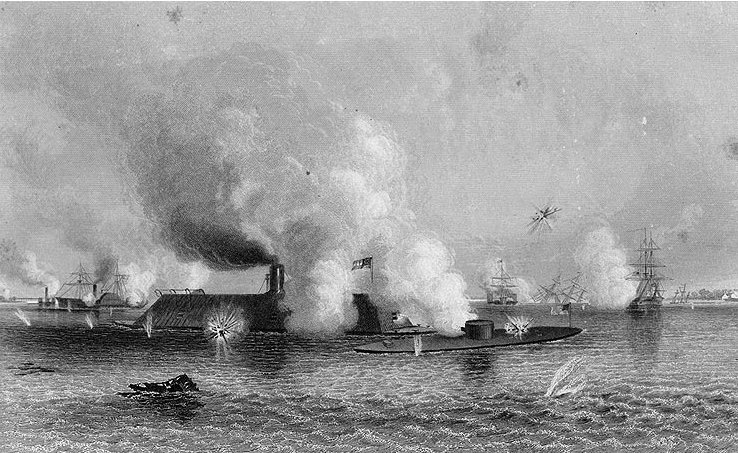 |
Halftone reproduction of an artwork, copyrighted by G.S. Richardson, 1906 |
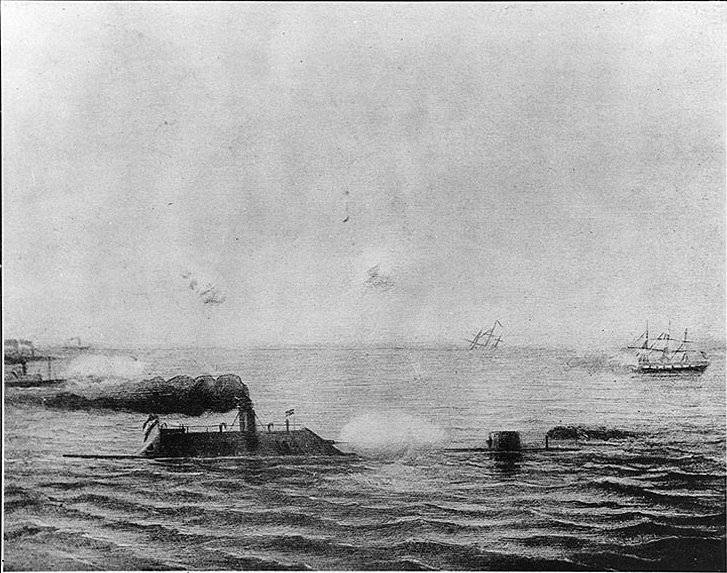 |
Lithograph published by Henry Bill, 1862 Other ships shown are USS Cumberland (sinking, at left), CSS Jamestown and Yorktown (center distance), USS Congress (right center, behind Virginia ) and USS Minnesota (right). This artwork is rather inaccurate in historical detail and orientation, showing the other ships generally much closer to the main action than was actually the case and including Cumberland and Congress , both of which had been sunk on the previous day. |
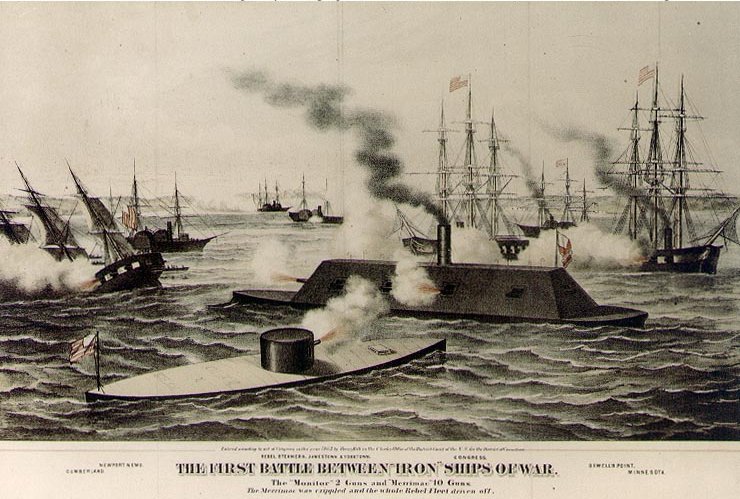 |
Colored lithograph by LeBreton, after a French officer's sketch, published in Paris, circa 1862 |
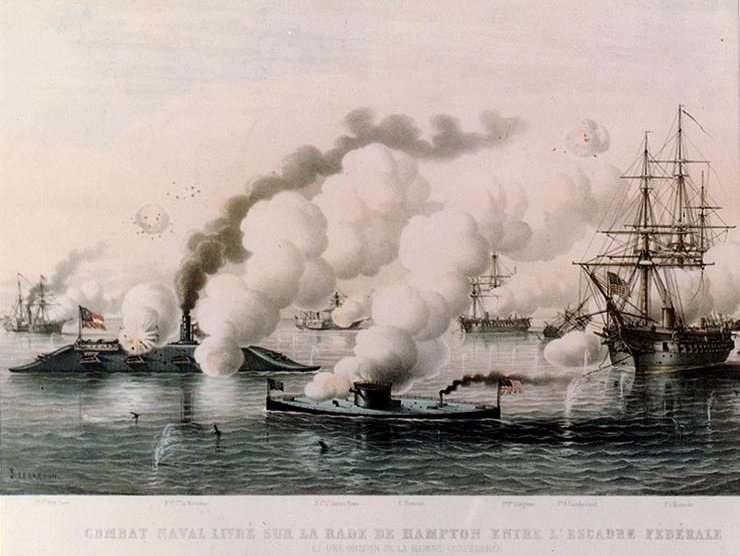 |
Line engraving published in "Harper's Weekly", January-June 1862 The scene is rather inaccurate in scale and detail, most significantly showing other Federal warships much closer to the action than was actually the case. |
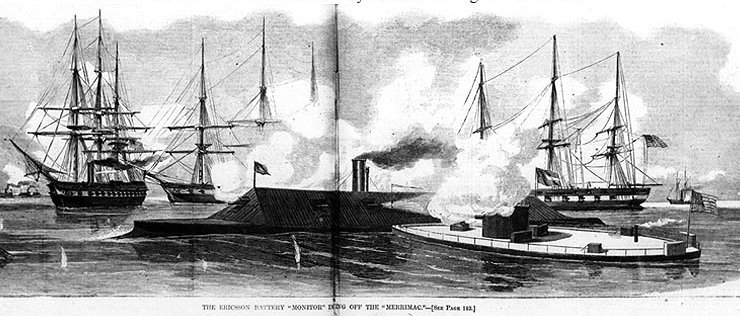 |
Lithograph by Currier & Ives, New York, 1862, "From a sketch furnished by F. Newman of Norfolk, Va." note the beginning of the use of the name USS Merrimac for the converted USS Merrimack |
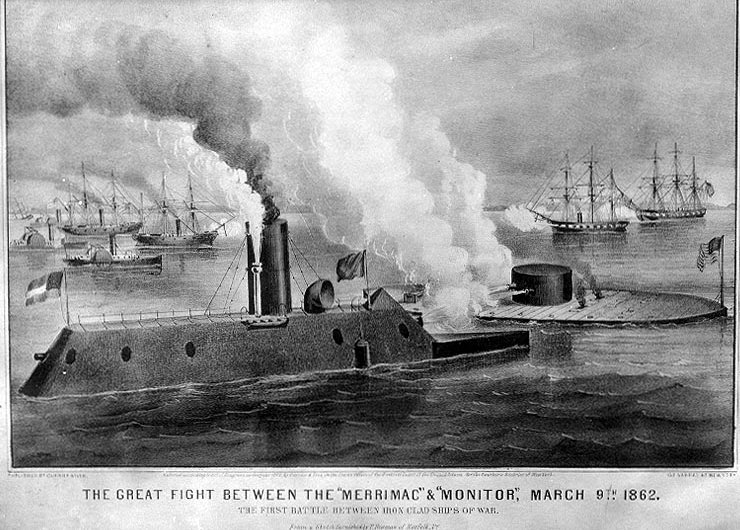 |
Line engraving published in "Harper's Weekly", January-June 1862, based on a drawing by Sergeant Charles Worret, Twentieth Regiment New York Volunteers. The view looks approximately south, from over Fortress Monroe, and provides a panoramic view of the action, with many elements keyed to text below the picture. Numbered features, as cited below the view, include: (Note: numbers 1-13 run across the upper part of the view, from left center to right) |
|
1. Sewell's Point Battery, 30 Guns 2. Craney Island Battery, 42 Guns 3. CSS Yorktown 4. CSS Jamestown 5. USS Monitor 6. CSS Virginia ('Merrimac') 7. Large Rebel Camp 8. USS Minnesota aground 9. Pig Point Battery |
10. Barrel Point Battery 11. Burning of the Congress 12. The Cumberland sunk 13. Newport News Point and Camp 14. St. Lorenze ... (small vessel near Minnesota ) 15. Hampton 16. Rip Raps (at far left) 17. French Man-of-War (left center) 18. Whitehall |
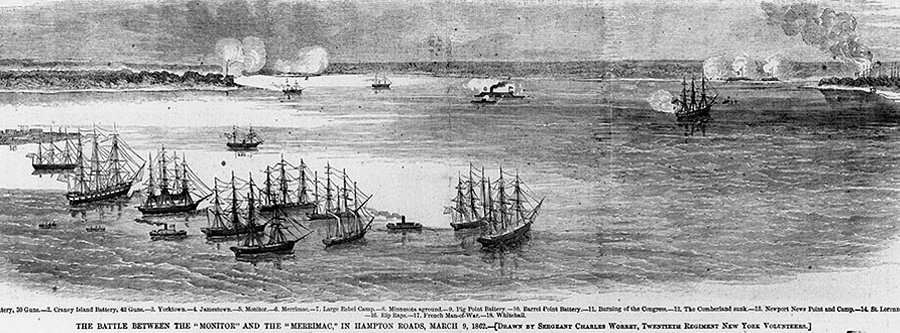 |
Information obtainted from: http://americancivilwar.com/tcwn/civil_war/Navy_Ships/Ironclad_Monitor_Virginia_Battle.html |